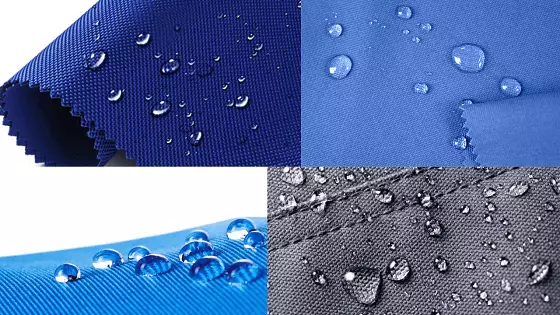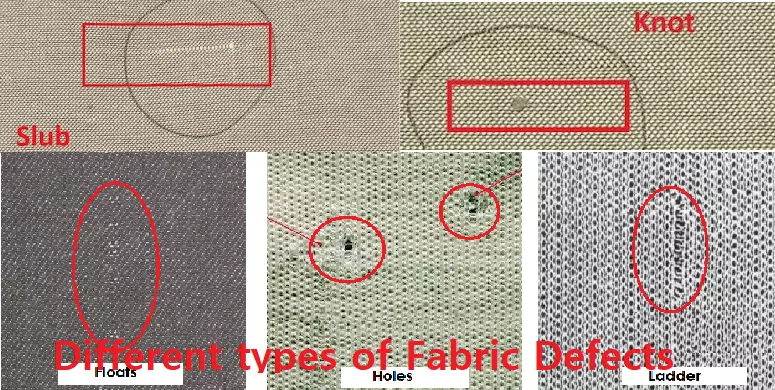Waterproof fabrics are engineered using various techniques and technologies, each designed to create a barrier between the fabric and water. The fabric passes through Water Repellent finishes to be water penetration resistant. Two types of process are there. 1. Hydrocarbon: Hydrocarbon repellents which are hydrophobic and oleophillic, repel water but quickly pick up soil and stains. 2. Fluorocarbon repellents are both hydrophobic and oleophobic, not only fluorocarbon are outstanding water repellents but they also resist oily and greasy substances. In this article, we discuss What is Waterproof Fabric? and How to Waterproof Fabric in detail below step by step.

What is Waterproof Fabric?
A waterproof fabric is a fabric that is coated or impregnated to form a continuous wall against the passage of water or a continuous sheet of rubber or plastic. Water resistance is the ability of a fabric to resist wetting and penetration of water. A water-repellent fabric is one whose fibers are usually coated with hydrophobic type compounds and whose pores are not filled in the course of treatment. This type of fabric is quite permeable to air and water vapor. Resistance to water penetration increases rapidly with increasing weight and thickness of the fabric. Woven fabrics generally have better resistance to water penetration than corresponding knit structures.
How to Waterproof Fabric?
Before you begin, gather the following materials:
- Fabric to be waterproofed
- Waterproofing product (e.g., waterproofing spray, wax, or liquid)
- Clean, dry cloth
- Mild detergent (if cleaning is necessary)
- Soft-bristle brush
- Waterproofing applicator (optional)
- Hairdryer (for some methods)
- Well-ventilated workspace
Step 1: Clean the Fabric
The first step is to ensure the fabric is clean and free from dirt, oils, and residues. If your fabric is machine washable, use a mild detergent and follow the care label instructions. Hand washing is advisable for delicate fabrics. After washing, rinse thoroughly and let it air dry.
Step 2: Choose Your Waterproofing Method
There are several methods to waterproof fabric, and the choice depends on the type of fabric and the level of water resistance you desire.
a. Waterproofing Sprays:
- Lay the fabric flat in a well-ventilated area.
- Shake the waterproofing spray can thoroughly.
- Hold the can 6-12 inches away from the fabric and spray an even coat.
- Allow it to dry completely.
b. Wax-Based Waterproofing:
- Rub a specialized wax waterproofing product onto the fabric’s surface.
- Use a soft cloth to evenly distribute the wax.
- Apply heat using a hairdryer to melt the wax into the fabric.
- Allow it to cool and dry.
c. Liquid Waterproofing:
- Apply the liquid waterproofing product using a brush or applicator.
- Make sure to cover the entire fabric surface evenly.
- Allow it to dry, and apply a second coat if necessary.
Step 3: Dry and Cure
After applying the waterproofing product, allow the fabric to dry thoroughly. This may take several hours or even overnight, depending on the method you’ve chosen. It’s important to follow the manufacturer’s recommendations regarding curing time.
Step 4: Test the Waterproofing
Before relying on your fabric in extreme conditions, it’s essential to test its waterproofing capabilities. Sprinkle a few drops of water on the fabric; if the water beads up and rolls off, your waterproofing was successful. If not, you may need to reapply the waterproofing product.
Step 5: Maintain Your Waterproof Fabric
Over time, the effectiveness of the waterproofing treatment may diminish. To maintain your waterproof fabric, reapply the waterproofing product as needed. Regularly clean the fabric and avoid abrasive detergents to prolong its water-resistant properties.
Applications of Waterproof Fabric
Waterproof fabric finds its way into various products and industries due to its remarkable qualities. Some common applications include:
- Outdoor Gear: From rain jackets and hiking pants to tents and backpacks, outdoor enthusiasts rely on waterproof fabric to stay dry and comfortable in wet conditions.
- Medical and Protective Clothing: Waterproof textiles are used in medical gowns and protective clothing to shield against liquid contaminants and infectious agents.
- Automotive: Car interiors and upholstery often feature waterproof fabric to prevent damage from spills and moisture.
- Sports and Recreation: Waterproof materials are used in swimwear, wetsuits, and sailing gear to keep athletes dry while engaging in water-based activities.
- Home Furnishings: Furniture, curtains, and upholstery may use waterproof fabric to prevent stains and moisture damage.
Conclusion
Making Waterproof fabric is a marvel of modern textile engineering, providing protection and comfort in a wide range of applications. Whether you’re an outdoor adventurer or simply appreciate staying dry in a sudden rain shower, waterproof fabrics have undoubtedly made a positive impact on your life. As technology advances, the future promises even more sustainable and effective waterproof fabric solutions, ensuring that we can face the elements with confidence and style.
- You may love to read: What is Sherpa Fabric: Characteristics, Types and Uses
- What is Knitting | Types of (Knitted) Knit Fabrics
- What is Scuba Knit Fabric: Properties and Uses
- What is Leather Fabric: Types, Properties, and Uses
- What are Lining, Padding, Sherpa, and Shell Fabric?
- What is Lace Fabric? Different Types of Lace Fabric


